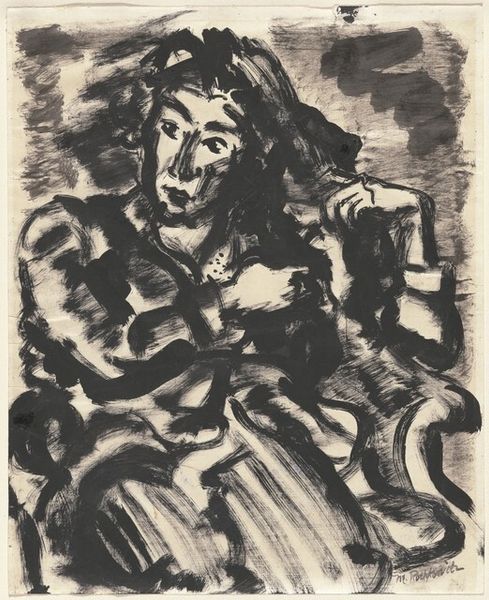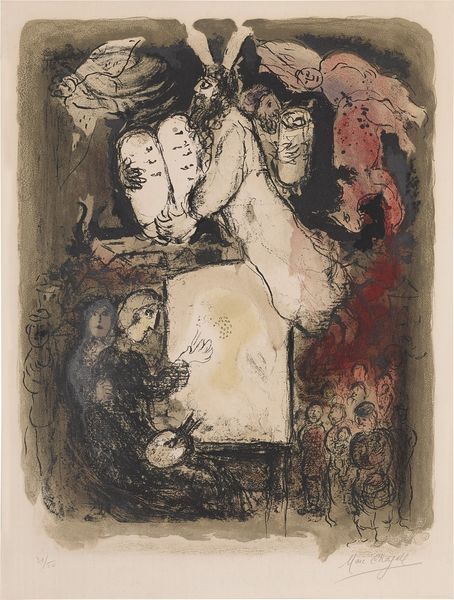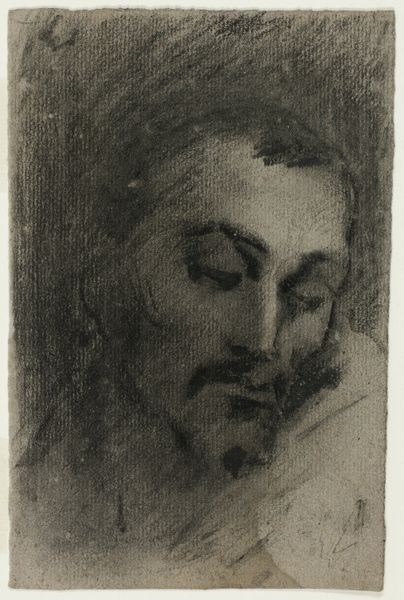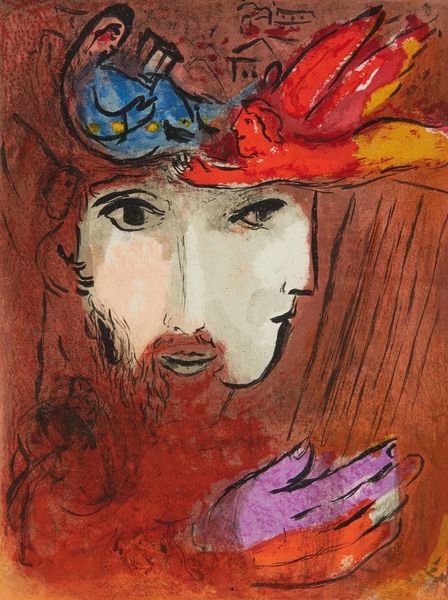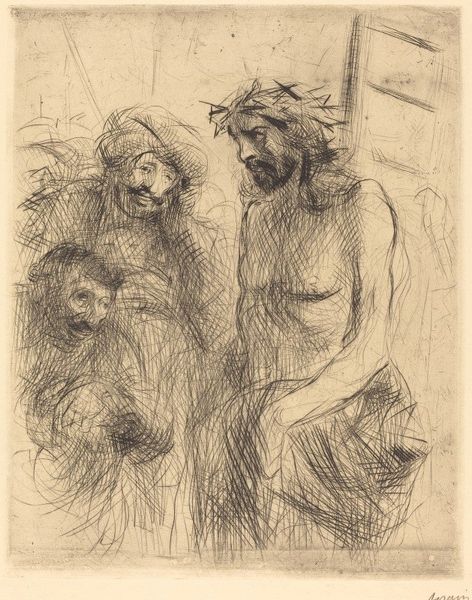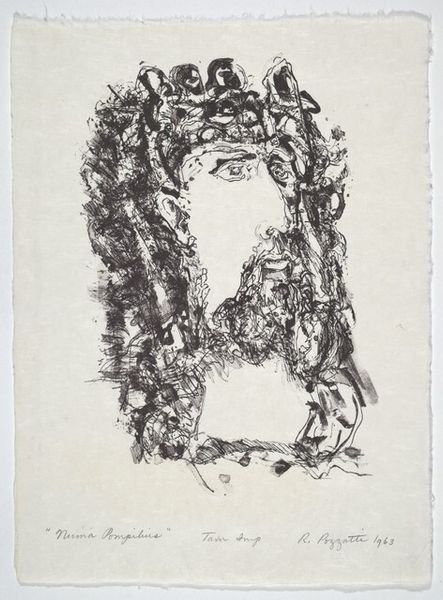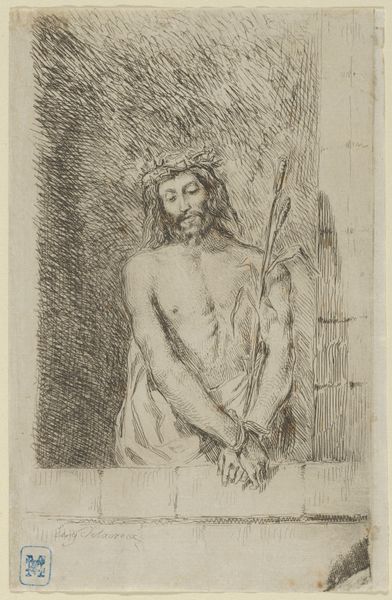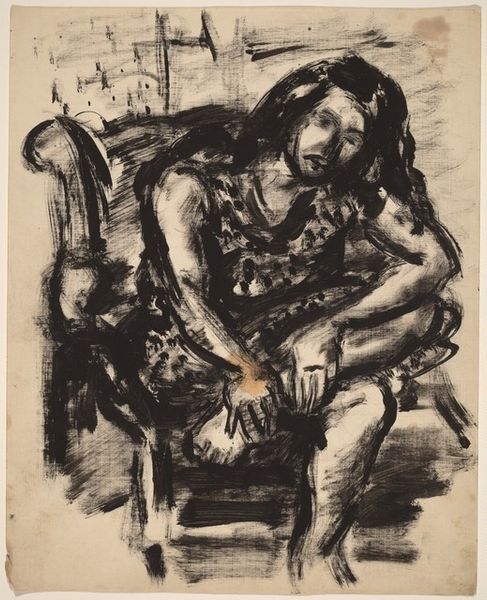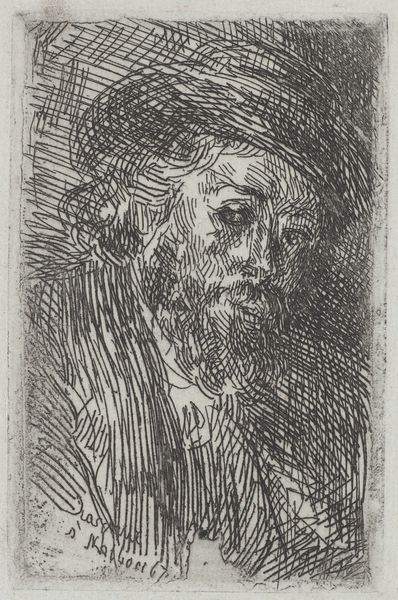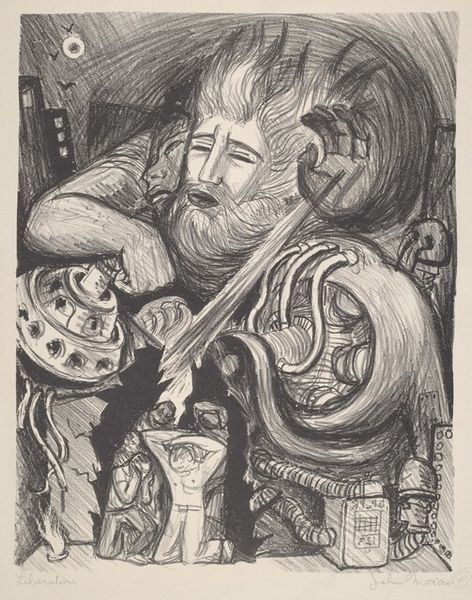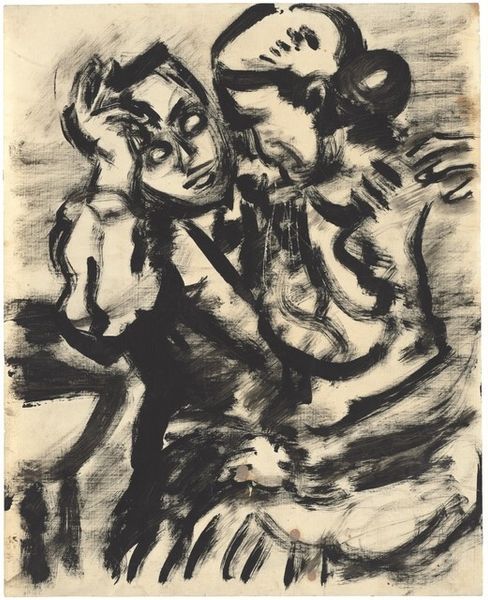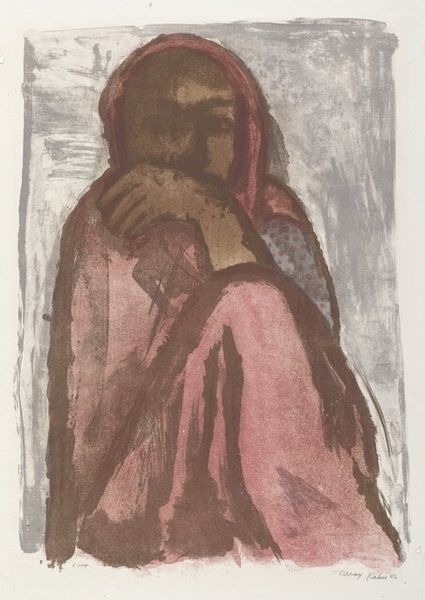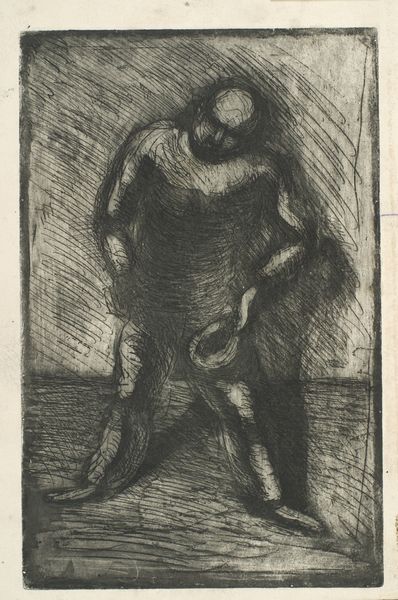
Copyright: Modern Artists: Artvee
Editor: This is Marc Chagall’s “Moses and the Table of the Law,” created in 1963 using colored pencil and ink on paper. It’s got a raw, almost frantic energy. What jumps out to you? Curator: I am particularly struck by Chagall’s process. Notice how he uses inexpensive materials – paper, ink, colored pencil – to convey such a monumental narrative. This democratizes artmaking. Does that looseness undermine the perceived "preciousness" often associated with religious themes, don't you think? Editor: It definitely feels more immediate, less… sacred in a traditional sense. How does the choice of these materials relate to the social context? Curator: Consider the post-war period. There's a weariness, a need to rebuild. These materials speak to that. They are readily available, honest. They eschew grandiosity in favor of directness. Think about the means of production here – it’s an individual act, almost defiant in its simplicity. What about the materiality of the tablets themselves? Editor: I hadn’t considered that. The tablets look almost like rough-hewn stone, emphasizing their physical weight and the labor involved in obtaining and carrying them. It's a human story as much as a divine one. Curator: Exactly! He strips away the mystique. Chagall isn’t just depicting Moses, he is embodying the struggles and triumphs of everyday people in their interaction with their physical world. So, would you agree that considering the materials, and how he uses them, allows us a greater insight into Chagall's intentions, and indeed, his social commentary? Editor: I do! I'll definitely be thinking about material choices differently from now on. It really connects the spiritual with the tangible world.
Comments
No comments
Be the first to comment and join the conversation on the ultimate creative platform.
